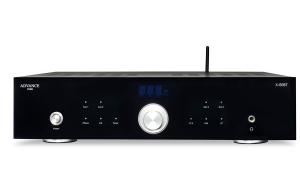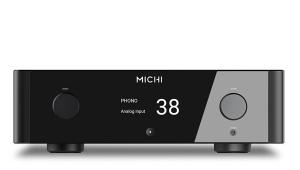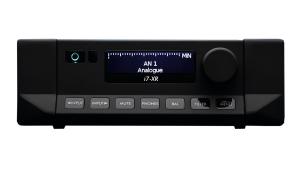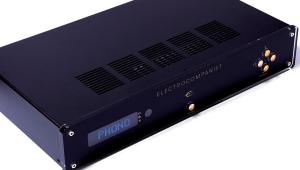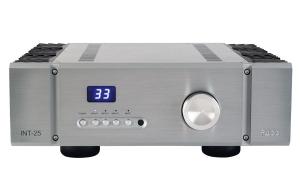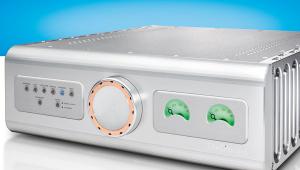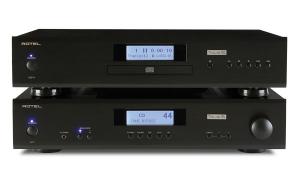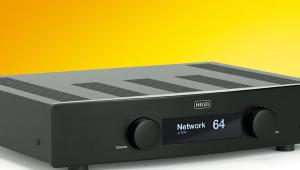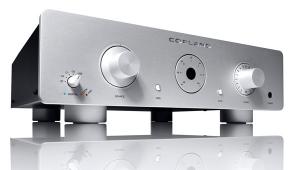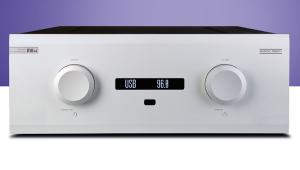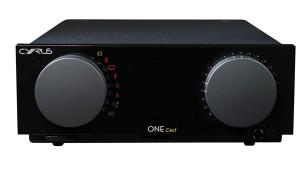Unison Research Unico Secondo - £1,860
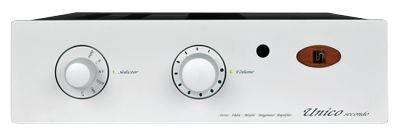
A large and imposing amp, this one is also pretty bare-bones, though unlike most it has the option of a phono stage. One of those was provided for review (the price given includes it, a very reasonable £125 on top of the basic model).
All kinds of amplifying devices are found inside the case, as the circuit uses bipolar transistors, FETs and valves. There’s very little use of surface-mount parts and most of the amplifying is done with discrete components, though there are a few op-amps dotted around and also some integrated circuits with part numbers intriguingly obliterated.
A substantial mains transformer is used and there is plenty of smoothing capacitance, plus quite extensive regulation of supply voltages for small-signal stages.
Uniquely in this group, input switching is done by a mechanical switch, mounted at the rear and operated by a long rod from the front panel – volume control also uses a regular mechanical potentiometer. The latter is motorised, but input selection is not remote controllable. That means you’ll have less cause to use the rather gorgeous remote, made of solid wood with a metal top plate – but also less cause to lament the ugly cheesehead screws which hold it together from the top. Please change to countersunk screws, at least!
Apart from the phono stage, input provision is basic and there are no modern frills like mini-jack sockets for portable players etc. There is a preamp output, which is also applicable to bi-amping and a record output marked ‘Monitor’. The phono stage handles MM and MC cartridges, though you have to get inside and fiddle with jumpers to change settings.
Sound qualityThis turns out to be another amplifier that’s good at exciting, energetic music-making, though our listening panel did feel at times that it’s, perhaps, a bit too much of a good thing on the excitement front and could do with relaxing a bit. Specifically, it has a touch of brightness that affects voices, particularly the consonants and doesn’t always have quite a bass reach of the best in this group.
On the other hand, energetic rock and suchlike is great. Our Michael Jackson track went down well, helped by a big presentation and plenty of power and drive in the bass. The same qualities helped to some extent in our operatic excerpt, but in that case the excitement built at the start of one particularly long crescendo was rather undermined by the way the sound lost focus as more and more instruments and voices joined in.
Detail is better in less thickly textured music, but even in the unaccompanied choral track, which has only half a dozen or so voices, there was some lack of information about the acoustic of the recording venue, information that our listeners had heard through other amps. The voices themselves were very successful in this case, though, the rather more ambient recording making the Unico Secondo’s sibilance much less of an issue.
As the lone phono-compatible amp in this group it was hardly possible to make comparisons, but by the prevailing standards of decent integrated amps this one does a good job with LP sources, especially from moving magnet cartridges: moving coil is a little less clear. Bass is very clean and treble has a nice sense of cohesion to it.
WE SAY: A good phono stage adds value, but the sound could use a little more precision and less brightness. Good energy and lively, if not astoundingly extended, bass, while high treble has a pleasing sweetness too.
01753 652669
unisonresearch.com
 |
Inside this month's issue:
Ruark R610 music system and Sabre-R standmount speakers, PMC twenty.23i Active, floorstanders, English Acoustics Downton preamplifier, Bluesound NODE ICON preamp/streamer, Ortofon Concorde Music Blue MM cartridge and much, much more
|


